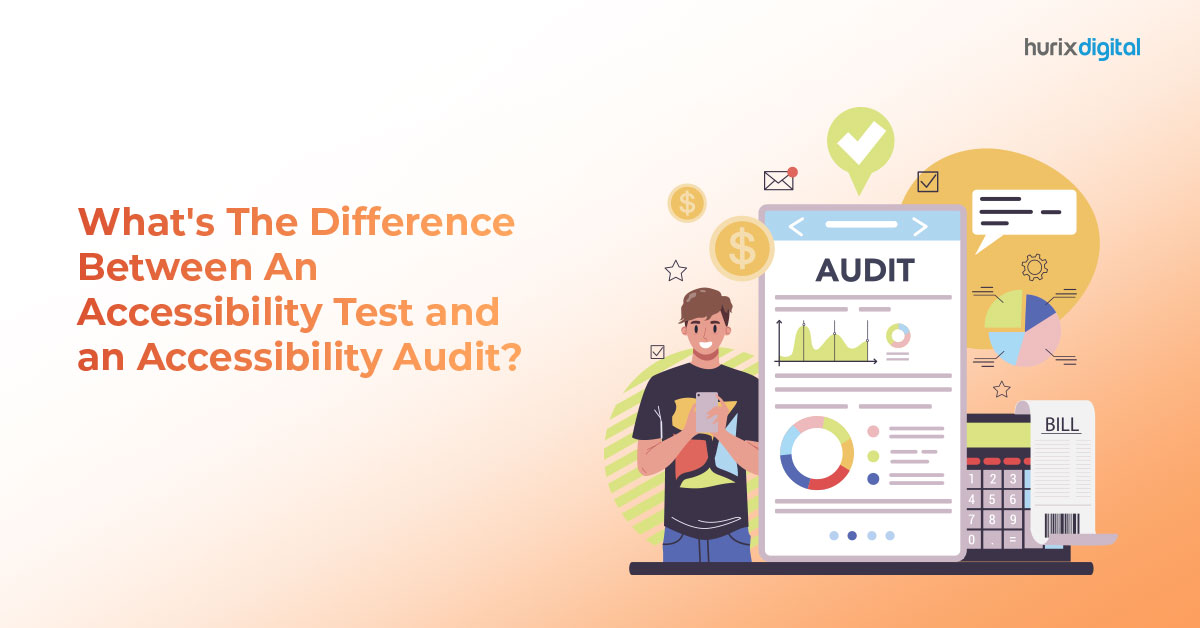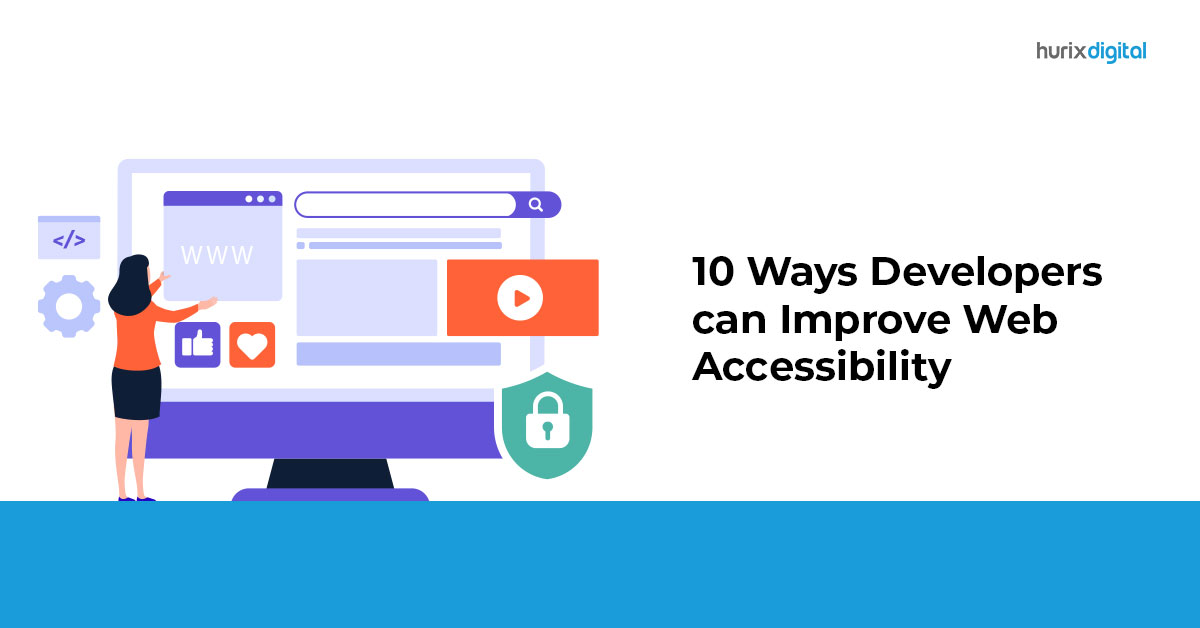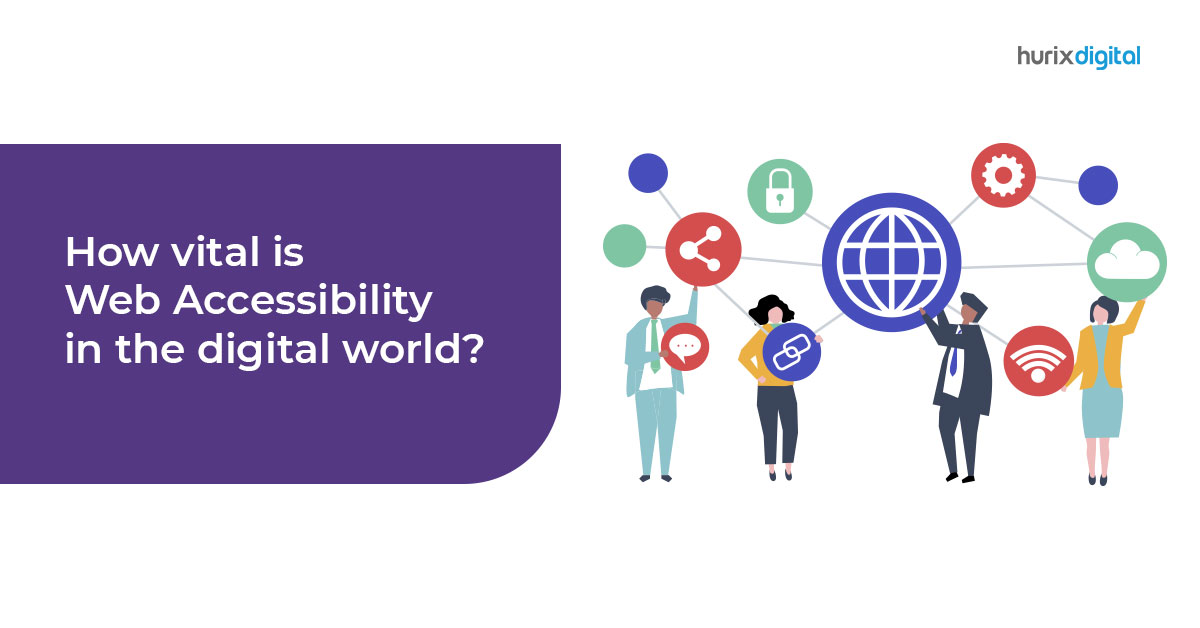
What’s The Difference Between An Accessibility Test And An Accessibility Audit?
Summary
Understand the differences between accessibility tests and audits, and learn when to use each approach to ensure your digital products are accessible and compliant with regulations.
Today it has become crucial for organizations to ensure that their websites and applications are accessible to all users, including those with disabilities. However, people are often confused about the terminology and methods used in this field. Two terms that are frequently used interchangeably are web accessibility testing and accessibility audit.
However, they are not the same thing. Today we will explore the key differences between accessibility testing and accessibility audit and why it is important to understand the difference between them.
Whether you are a developer, designer, or accessibility specialist, this blog will provide valuable insights into the world of web accessibility and help you create more inclusive digital experiences for all your users.
Table of Contents:
- How Web Accessibility Testing Is Different From Accessibility Audit
- Accessibility Testing vs Accessibility Audit
- What Should You Choose: An Accessibility Test Or An Audit?
- Conclusion
How Web Accessibility Testing Is Different From Accessibility Audit
Accessibility testing and accessibility audits are two different methods we use to assess the accessibility of an application or website. According to the Pew Research Centre, 75% of Americans with a disability use the internet regularly. These numbers indicate the importance of accessibility compliance so that more and more people can access your content.
Organizations are working towards creating more accessible content by using detailed accessibility checklists and tools. Accessibility testing and audits are both aimed at helping to identify and resolve any web accessibility issues. However, there are several key differences between them. Here are the top 8 ways in which accessibility testing is different from an accessibility audit:
1. Objectives
Web accessibility testing is focused on identifying any accessibility issues, while an accessibility audit is focused on establishing objectives and requirements for creating an accessible digital platform.
2. Scope
An accessibility audit assesses the entire digital platform and creates a comprehensive report, while accessibility testing focuses on a limited website or application scope.
3. Guidelines
Website accessibility testing focuses on testing against specific guidelines, while an accessibility audit assesses the compliance guidelines and how they are implemented throughout the website or app.
4. Process
Web accessibility testing is usually conducted manually or using automated tools, while an accessibility audit is usually conducted using a combination of manual and automated processes.
5. Cost Involved
Accessibility testing is typically less costly than an accessibility audit, as it does not involve a full analysis of the digital platform.
Also, third-party consultants usually perform WCAG audits. Hence, they are more expensive.
6. Tools
Accessibility testing typically uses automated tools to test the application or website. In contrast, an accessibility audit may require additional tools to assess the overall accessibility of the platform.
7. Frequency
Website accessibility testing is usually conducted more frequently to keep the website or app’s accessibility in check and up to date.
However, a web accessibility audit is conducted less frequently to check overall compliance.
8. Depth
Accessibility testing is generally a shallow analysis of the application or website, while an accessibility audit is a far more in-depth assessment of the entire digital platform.
These were some of the key differences between accessibility testing and accessibility audits.
Accessibility Testing vs Accessibility Audit
Accessibility Testing |
Accessibility Audit |
|
|
|
|
|
|
|
|
|
|
|
|
|
|
What Should You Choose: An Accessibility Test Or An Audit?
When it comes to evaluating the accessibility of a website or application, both accessibility testing and accessibility audits can be useful tools. The choice between the two depends upon several factors, including the organization’s goals, budget, and timeline.
Accessibility testing typically identifies specific accessibility issues on a website or application, such as missing alternative text for images or invalid markup. Testing is often performed using a combination of automated and manual testing tools and can be done quickly and efficiently. Accessibility testing is useful for identifying specific issues and verifying that accessibility guidelines have been met.
On the other hand, an accessibility audit is a more detailed review of a website’s overall accessibility. It generally involves reviewing the website against accessibility guidelines such as WCAG 2.1.
Furthermore, an audit is a more in-depth process that can take longer and be more costly, but it provides a more thorough understanding of a website’s accessibility. In general, accessibility testing is useful for evaluating specific accessibility issues, while an accessibility audit is better suited for evaluating a website’s overall accessibility.
However, organizations may use both approaches to get a complete picture of their website’s accessibility. Ultimately the choice between the two will depend on your goals, budget, and time.
Conclusion
Accessibility testing and an accessibility audit are critical for ensuring a website or app is accessible to people with disabilities. However, web accessibility testing is focused on testing specific user flows and scenarios, while an accessibility audit is a comprehensive review of the entire system.
And finally, accessibility testing is meant to evaluate usability, while an accessibility audit focuses more on compliance with accessibility standards and best practices.
Hurix Digital offers various services related to e-learning and digital content solutions, including web accessibility solutions. We provide the best accessibility solutions designed to help organizations ensure that their websites are accessible to people with disabilities in compliance with international accessibility guidelines such as WCAG 2.1.
Overall, our web accessibility solutions aim to help organizations create inclusive digital experiences accessible to all users, regardless of their abilities.
Contact us today to learn more about our accessibility solutions!

Vice President – Content Transformation at HurixDigital, based in Chennai. With nearly 20 years in digital content, he leads large-scale transformation and accessibility initiatives. A frequent presenter (e.g., London Book Fair 2025), Gokulnath drives AI-powered publishing solutions and inclusive content strategies for global clients








